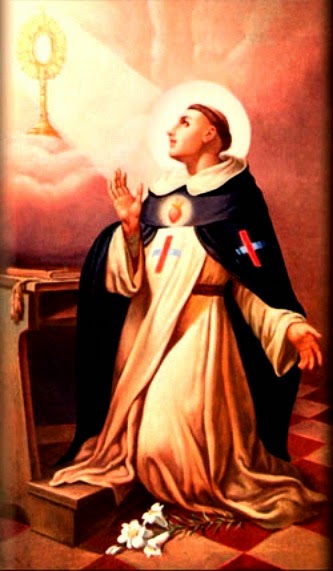Saint of the Day: St. John Before the Latin Gate

The principal feast of Saint John the Apostle is observed on December 27th, but a secondary feast is marked on May 6th. On that day the liturgy commemorates the dedication of the Church of Saint John near the Porta Latina, the southeast gate of the city of Rome.
In the year 95, John appeared before the tribunal of pagan Rome. He was convicted of having propagated, in a vast province of the Empire, the worship of a Jew who had been crucified under Pontius Pilate. He was considered a superstitious and rebellious old man, and it was time to rid Asia of his presence. He was therefore sentenced to a cruel death.
A huge cauldron of boiling oil was prepared in front of the Latin Gate. The sentence ordered that the preacher of Christ be plunged into this bath. The hour had come for the second son of Salome to partake of his Master’s chalice. John’s heart leapt with joy. After cruelly scourging him, the executioners seized the old man, and threw him into the cauldron. But, the boiling liquid lost all its heat; the Apostle felt no scalding. On the contrary, when they took him out again he felt all the vigor of his youthful years restored to him.
The praetor’s cruelty was foiled, and John, a martyr in desire, was to be left to the Church for some few years longer. An imperial decree banished him to the rugged Isle of Patmos, where God revealed to him the future of the Church even to the end of time.
~Excerpted from The Liturgical Year, Abbot Gueranger O.S.B.
What lesson is there for us?
St. John was one of the greatest devotees of Our Lady. He was given as a son to her, and she was given as a mother to him. Probably he was already practicing the perfect form of devotion to Our Lady that St. Louis Grignion de Montfort wrote about, which is the holy slavery. At any rate, all his life he had the greatest devotion to her and an intimate union of soul with her. It is more than licit to imagine that when he was thrown into the cauldron of oil, his eyes and thoughts were turned toward her. He received a miracle – the recovery of his youthful strength - through her hands. Also, the grace of the visions he received in Patmos came through her.
In those revelations the future of the Church was unsealed to him. So, it is probable that the present days were shown to him. It is not impossible that he also saw the individuals whom Our Lady would call to fight for her glory in these sad days in which we live.
Our Lady was given to St. John as mother because he was the only Apostle who remained with her at the foot of the Cross. None of the other Apostles was there. The chaste disciple, the one whom Our Lord loved, was the disciple who remained faithful. Today, in the hour when so many have abandoned the foot of the Cross, it is natural that Our Lady be given again as mother to those who remain faithful. To be at the foot of the Cross means to be faithful to the Holy, Apostolic, Roman Catholic Church; to be orthodox; to be counter-revolutionary; to be a slave of Our Lady in a world where no one wants to talk about suffering, dedication, fidelity, and purity. We have, therefore, these points in common with St. John.
~ Prof. Plinio Corrêa de Oliveira




Comments
Post a Comment
Comments are moderated and are published at the blogger's discretion.